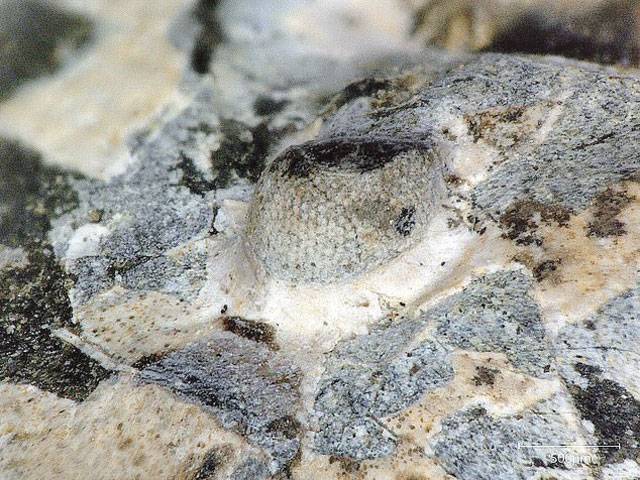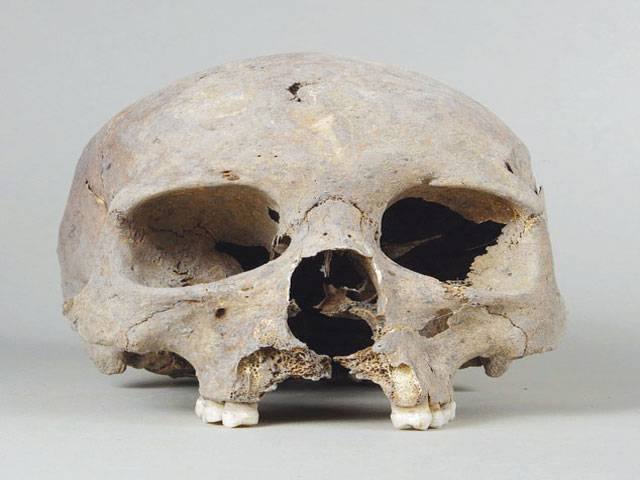Fossilised eye of an ancient sea creature has been analysed by scientists
ISLAMABAD - The fossilised eye of an extinct sea creature that lived 429 million years ago has been analysed by scientists for the first time. The analysis reveals it is similar to the sight organ of some modern-day animals, such as dragonflies, bees and crustaceans. The prehistoric peeper belonged to a hard-shelled arthropod called a trilobite (Aulacopleura kionickii). It was unearthed near Lodenice in the Czech Republic in 1846 but has never been analysed in fine detail until now. Corresponding author Dr. Brigitte Schoenemann, of Cologne University, said: ‘The parallels are amazing. The findings suggest the principles of vision in many insects and crustaceans today are at least half a billion years old.’ The flat, half-inch long fossil had two bulging semi-oval eyes on the back of its head - one of which had broken off.
Analysis of the fossilised remains reveals the ancient creature named Aulacopleura koninckii had a primitive form of compound eye. It consisted of tiny visual cells, called ommatidia, just like those seen in bees today.
Christopher Columbus didn’t bring syphilis to Europe, study reveals
ISLAMABAD - Christopher Columbus was not responsible for bringing syphilis to Europe, a new study suggests. The explorer and his crew have long been blamed for bringing the transmitted disease back to the continent after travelling to the Americas. However, analysis of six skeletons in Finland, two in Estonia and one from the Netherlands yielded four positive samples for the syphilis bacteria, Treponema pallidum. This shows the transmitted disease was spreading across Europe in the early 1400s. Given Columbus did not set sail until August 3, 1492, scientists from the University of Zurich say the explorer and his escapades are not the root cause of the syphilis outbreak which lasted for three centuries.
The study tracked the history of the Treponema pallidum bacteria and its related species, to find out when it was first circulating and to try and track down its origin.







